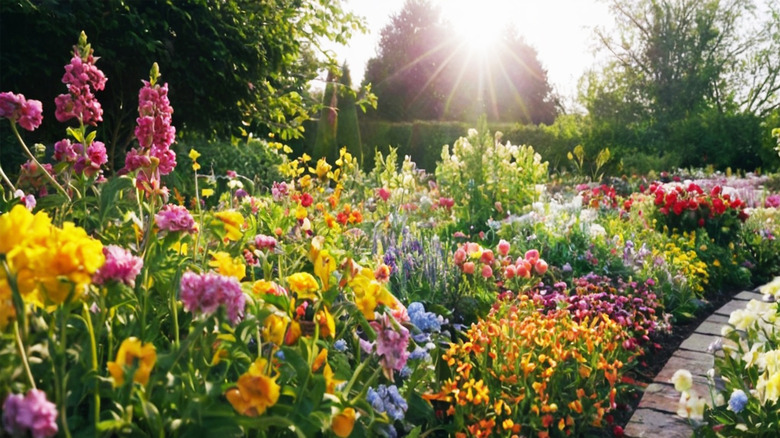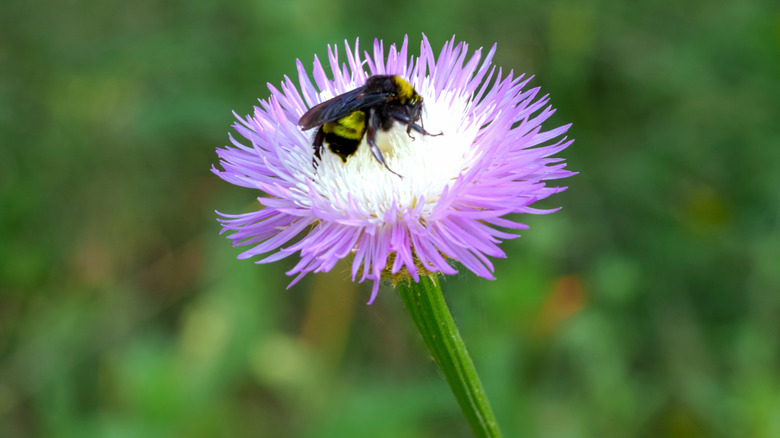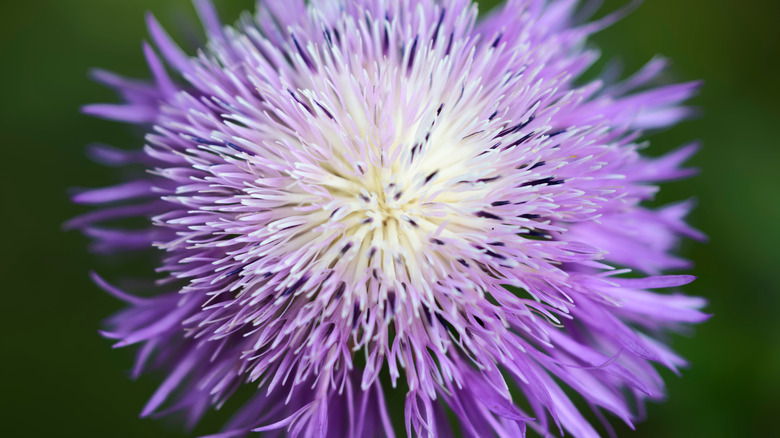The Beautiful Purple Self-Seeding Flower That Will Turn Your Yard Into A Pollinator Magnet
There's a plant with a splash of purple that can transform your outdoor space, not just with its beautiful flowers, but by becoming a bustling hub of activity for local pollinators. You can make this happen when you grow basketflower (Plectocephalus americanus). This wildflower with its fringed blooms can elevate your garden and make it a pollinator magnet, helping you avoid common mistakes when trying to attract them to your yard.
Often resembling a thistle but without the prickly defenses, its large lavender-pink petals with a white center are said to resemble woven baskets. The basketflower is a rich food source for pollinators, making it an excellent choice if you want to help feed bees and butterflies while bringing some wild beauty to your yard. Basketflowers aren't invasive, but they do self-seed. While they might spread throughout smaller garden areas, they're also quite easy to remove if they pop up where you don't want them. This natural self-seeding means it comes back on its own every year, saving time and effort. This resilient plant helps a variety of insects and contributes to a healthy and balanced ecosystem.
A vibrant gathering spot for nature's busy helpers
The basketflower, one of many durable, heat tolerant plants, helps your garden thrive by providing benefits to a wide range of creatures. Its open blossoms deliver a supply of nectar, packed with sugars and amino acids, which provides an energy boost to many insects. The plant's pollen is notably rich in protein, a vital nutrient for bees and other insects. The blooms' subtle, sweet, honey-like scent also helps draw them in, and you'll often see a steady stream of visitors, from honeybees to a stunning array of butterfly species and graceful hummingbirds. Its long blooming period makes it a consistent food source throughout the growing season.
As autumn arrives and the flowers fade, the plant's seeds turn into an important food source. Birds like quail, dove, and numerous songbirds seek them out. These seeds provide energy for migrating birds or those preparing for winter, making the basketflower a year-round asset for local wildlife.
Simple steps to grow basketflower
Growing basketflower is surprisingly simple, making it a perfect plant for both seasoned gardeners and those just beginning their journey. This wildflower, native to North America and suitable for growing zones 3 through 9, thrives in full sun. These impressive plants can reach heights of 4 feet or taller. When it comes to soil, basketflower isn't picky. It adapts well to a variety of types, including sandy, loamy, and clay soils, as long as they drain well. It prefers dry to moderately moist conditions and, once established, is remarkably drought-tolerant.
The easiest way to start basketflower is from seed. This simple method, which applies to many other types of flowers you should consider growing from seed, involves planting them in the fall. Planting seeds in the fall typically gets the best results, since they naturally germinate over the cooler months. Just scatter the seeds lightly, covering them with a thin layer of soil, and keep the area consistently moist until seedlings emerge. This tough plant requires minimal attention, generally needing no supplemental fertilizer. While it can occasionally have issues like aphids or powdery mildew, these are rarely serious and often manageable with basic garden care, ensuring your basketflower remains healthy and beautiful.


